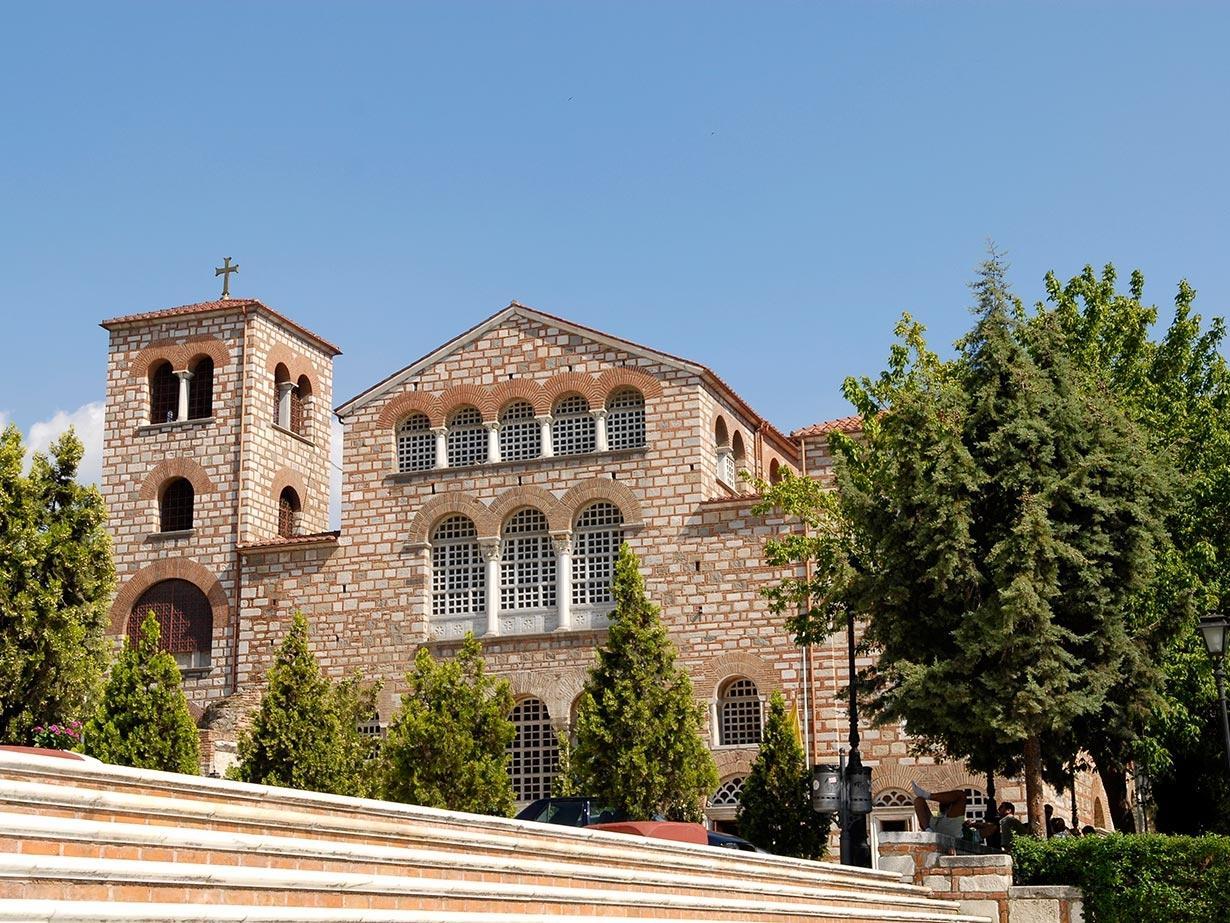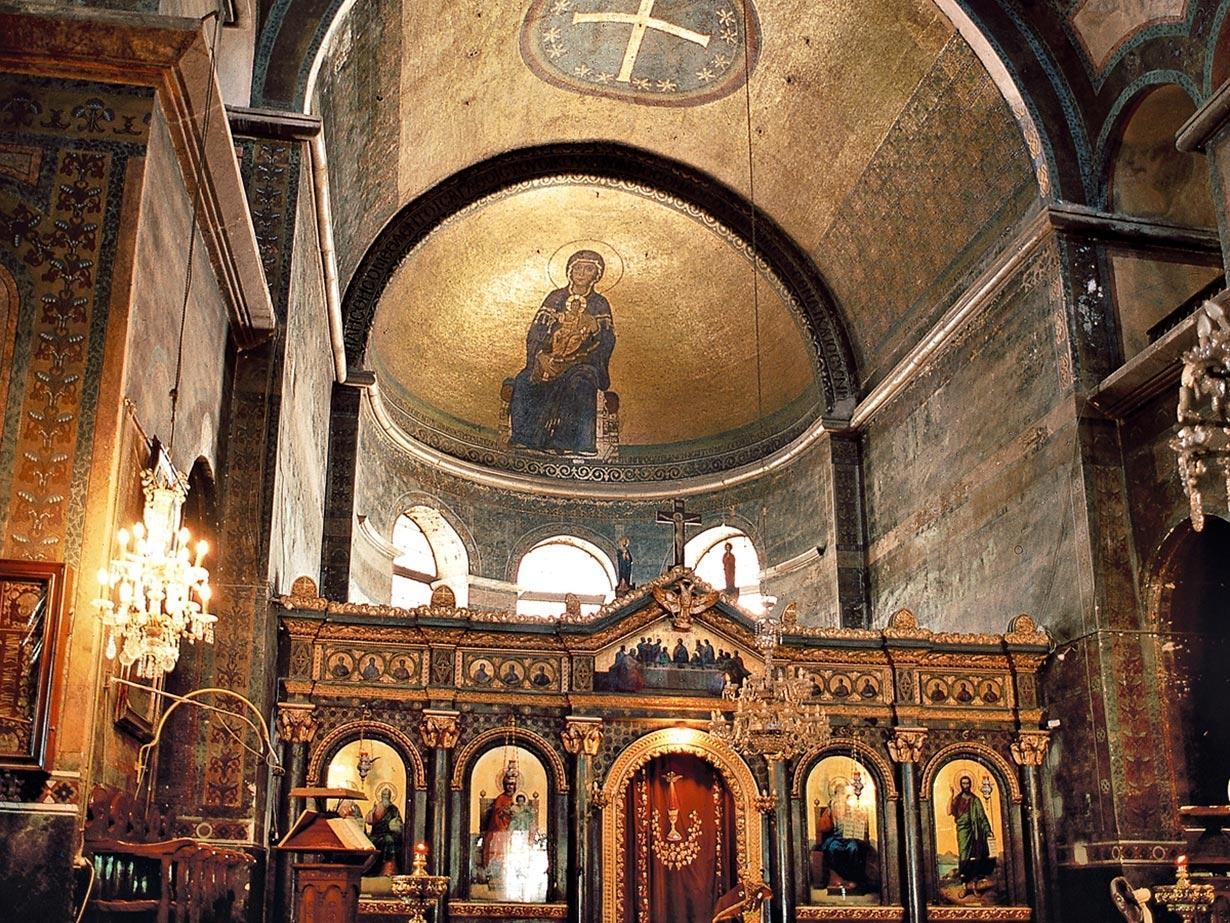Dedicated to the patron Saint of the city, the magnificent Basilica of Aghios (St.) Demetrius is one of the most important early Christian churches of Thessaloniki. At first, it was built on the Roman bath ruins, the place where, according to tradition, St. Demetrius was imprisoned and martyred in 303. The first church of Aghios Demetrius was built after 313 AD. The holy place of martyrdom, the Crypt, located beneath the transept of the church and in the late Byzantine years was the center of the Saint’s miraculous myrrh production.
The miraculous myrrh gushing from the grave (that’s why the Saint’s nickname is Myrovlytis) and his reputation as a protector that protected Thessaloniki by the relevant invaders with His Divine intervention, overcame geographical boundaries of the city, and millions of pilgrims around the world who come to honor his grave for seventeen centuries. There is an exhibition in the crypt, with findings mainly from the Basilica and the excavations in the crypt and is visitable for pilgrims at the point of martyrdom and operates as a museum of antiquities. Moreover, the access to the silver reliquary with the relics of St. Demetrius in the church is free, while the religious who will be in Thessaloniki during the days of celebrations for the feast of St. Demetrius (October 26), can watch the suggestive litany, on 25th of October, of the Saint’s skull and relics on the city streets accompanied by members of the political and military leadership, local government and of course numerous believers Christians.
In 1492-3 it was converted into a mosque. After the liberation of the city in 1912, the church re-opened, but in 1917 the temple was almost destroyed by the great fire that burned the biggest part of the historical center of Thessaloniki. The church in its current form is a five-aisled basilica with narthex and transept, characterized by rich painting, mosaic and marble decorations, while in the southeast corner is annexed the chapel of Aghios (St.) Efthymios.










